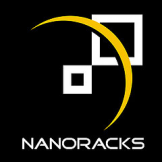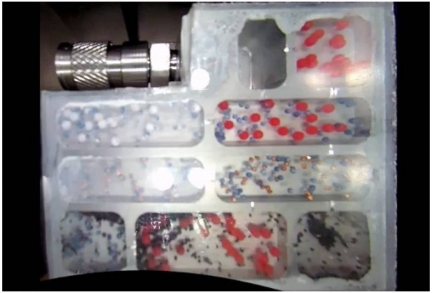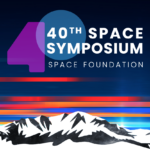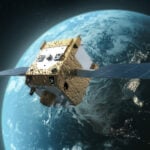Partner News
Learning How Our Solar System Formed, from Inside the International Space Station
Written by: developer
 NanoRacks Downlinks Video Footage from Within NR’s Research Platform #2
NanoRacks Downlinks Video Footage from Within NR’s Research Platform #2
Webster, TX., (Nov. 25, 2014) – The University of Central Florida’s experiment, NanoRocks, currently on board the International Space Station (ISS) is producing promising results. The experiment, studying solar system formation, was brought to the ISS through a NanoRacks’ partnership with Space Florida’s International Space Station Research Competition. NanoRocks is one of seven competition winners to be flown to low-earth orbit through the NanoRacks-Space Florida program.
“We’re pleased with the early data,” said UCF Physics Professor and project Principal Investigator Joshua Colwell. “This is exactly why scientific research in space is critical. There’s no way we could get the kind of data we are seeing from our NanoRocks experiment by doing it here on Earth. We need to study collisions at low speeds and without interference from Earth’s gravity, and that means space.”
The scientific motivation behind the NanoRocks experiment is to understand collisions that occur in the early stages of planet formation, both in our solar system and systems around other stars. Specifically, UCF is studying how these developing planets get from just centimeters across to much larger objects, known as planetesimals, which are able to gravitationally attract to each other and form full size planets.
“This is why Space Station utilization is so compelling,” adds NanoRacks’ Dream-Up Director Patricia Mayes “In a container the size of a soda bottle, these researchers are solving the mysteries to how our solar system formed. The research possibilities on ISS are endless when gravity is removed as a variable, and we love being the facilitator to this process.” The experiment works like this. NanoRocks holds eight different sample trays, each holding different types and combinations of spherical particles (i.e., glass, acrylic, copper, and rock). The experiment shakes the particle reservoir, allowing the particles to bump into each other. The particles’ mechanical energy is then dissipated into thermal energy, allowing the velocity to get near zero. The particles are moving at speeds as slow as a fraction of a centimeter per second. The researchers at UCF can then measure speeds both before and after collisions, and the collisions where the particles stick together.
“Our company is thrilled to be facilitating onboard the space station a project that while small in size has infinite potential,” says NanoRacks’ CEO Jeffrey Manber.
Recently, NanoRacks was able to downlink video footage from within NanoRacks’ Frame 2, where the experiment is hosted aboard the ISS, showing exactly how science experimentation happens in microgravity. The largest particles are two millimeters, and the smaller are just a fraction of a millimeter. To see the video click here:

About NanoRacks, LLC
NanoRacks LLC was formed in 2009 to provide commercial hardware and services for the U.S. National Laboratory onboard the International Space Station via a Space Act Agreement with NASA. NanoRacks’ main office is in Houston, Texas, right alongside the NASA Johnson Space Center. The Business Development office is in Washington, DC. The Company seeks to democratize outer space utilization by owning and marketing its own family of research equipment and by providing low-cost, high quality services in low-earth orbit and beyond. To date over 200 payloads have been deployed by the Company on the International Space Station and our customer base includes the European Space Agency (ESA) the German Space Agency (DLR,) the American space agency (NASA,) US Government Agencies, Planet Labs, Urthecast, Space Florida, NCESSE, Virgin Galactic, pharmaceutical drug companies, and organizations in Vietnam, UK, Romania and Israel. Our customer base has propelled NanoRacks into a leadership position in understanding the emerging commercial market for low-earth orbit utilization.
America’s Partnership University:
The University of Central Florida, the nation’s second-largest university with nearly 60,000 students, has grown in size, quality, diversity and reputation in its first 50 years. Today, the university offers more than 200 degree programs at its main campus in Orlando and more than a dozen other locations. UCF is an economic engine attracting and supporting industries vital to the region’s future while providing students with real-world experiences that help them succeed after graduation. For more information, visit http://today.ucf.edu.


